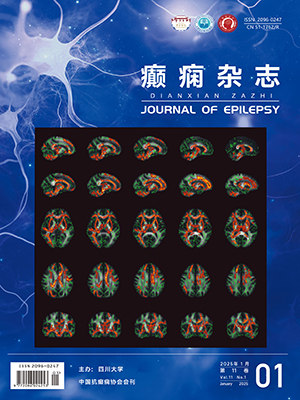| 1. |
Specchio N, Wirrell EC, Scheffer IE, et al. International League Against Epilepsy classification and definition of epilepsy syndromes with onset in childhood: position paper by the ILAE Task Force on Nosology and Definitions. Epilepsia, 2022, 63(6): 1398-1442.
|
| 2. |
Gao K, Lin Z, Wen S, et al. Potassium channels and epilepsy. Acta Neurol Scand, 2022, 146(6): 699-707.
|
| 3. |
Lee YC, Durr A, Majczenko K, et al. Mutations in KCND3 cause spinocerebellar ataxia type 22. Ann Neurol, 2012, 72(6): 859-869.
|
| 4. |
Pollini L, Galosi S, Tolve M, et al. KCND3-related neurological disorders: from old to emerging clinical phenotypes. Int J Mol Sci, 2020, 21(16): 11532.
|
| 5. |
Birnbaum SG, Varga AW, Yuan LL, et al. Structure and function of Kv4-family transient potassium channels. Physiol Rev, 2004, 84(3): 803-833.
|
| 6. |
Wang J, Wen Y, Zhang Q, et al. Gene mutational analysis in a cohort of Chinese children with unexplained epilepsy: Identification of a new KCND3 phenotype and novel genes causing Dravet syndrome. Seizure, 2019, 66: 26-30.
|
| 7. |
Zhang Y, Jiang H, Li XM. Cardiocerebral channelopathy caused by KCND3 mutation in a child: A case report. Front Pediatr, 2022, 10: 1019122.
|
| 8. |
Giudicessi JR, Ye D, Kritzberger CJ, et al. Novel mutations in the KCND3-encoded Kv4. 3 K+ channel associated with autopsy-negative sudden unexplained death. Hum Mutat, 2012, 33(6): 989-997.
|
| 9. |
Nakajima T, Kawabata-Iwakawa R, Kaneko Y, et al. Novel cardiocerebral channelopathy associated with a KCND3 V392I mutation. Int Heart J, 2020, 61(5): 1049-1055.
|
| 10. |
Li-Smerin Y, Hackos DH, Swartz KJ. alpha-helical structural elements within the voltage-sensing domains of a K(+) channel. J Gen Physiol, 2000, 115(1): 33-50.
|
| 11. |
Duarri A, Jezierska J, Fokkens M, et al. Mutations in potassium channel KCND3 cause spinocerebellar ataxia type 19. Ann Neurol, 2012, 72(6): 870-880.
|
| 12. |
Durr A. Autosomal dominant cerebellar ataxias: polyglutamine expansions and beyond. Lancet Neurol, 2010, 9(9): 885-894.
|
| 13. |
Singh B, Ogiwara I, Kaneda M, et al. A Kv4. 2 truncation mutation in a patient with temporal lobe epilepsy. Neurobiol Dis, 2006, 24(2): 245-253.
|
| 14. |
Huin V, Strubi-Vuillaume I, Dujardin K, et al. Expanding the phenotype of SCA19/22: Parkinsonism, cognitive impairment and epilepsy. Parkinsonism Relat Disord, 2017, 45: 85-89.
|




